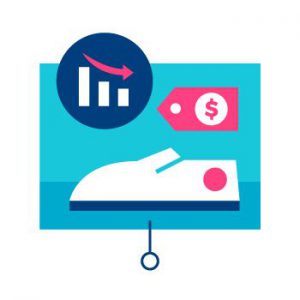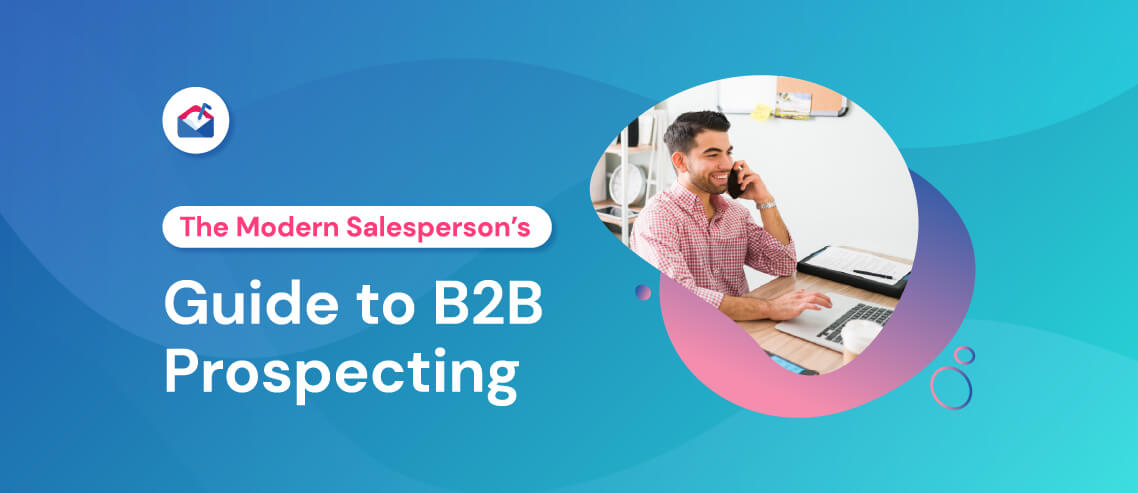What Most Marketing Agencies Get Wrong When Selling Their Services

Contents
Twelve years ago, when I first started out as a digital marketing lone ranger, my main goal was to become financially independent whilst providing a good quality of life for my family. It soon became clear that in order to do what I loved, I needed to learn how to package myself and my services to appeal to potential clients.
But one of the biggest challenges I had to face was how to sell my “product” to clients. With over 120,000 digital agencies operating in the U.S. alone, it was tough to stand out against the competition, make a living, whilst at the same time providing excellent value.
It took me a lot of trial and error to find out what worked… and, more importantly, what didn’t. Learn from my mistakes and ensure you don’t get these things wrong when selling your marketing services.
Not researching the potential client
One of the most important aspects of selling a product is knowing who you’re selling to. After all, without knowing who your customers/clients are, there’s no way of knowing if you’ll be a good fit. It seems like an obvious point to make, but it’s surprising how many businesses forget to do their homework.
When I started out, I had no reputation to fall back on. No-one had heard of Louder Online, or why I was worth working with. So, instead of relying on my name, I had to work extra hard at building relationships, which began with some good old-fashioned research. Before approaching any potential client, I would sit down and find out as much as I could about their business.
Sounds like a daunting task – how do you research every single target client when you’re working from a list of hundreds?
Start out with your longlist and start filtering out businesses that wouldn’t be a good fit. You might consider segmenting your list by industry, by location, by company size or even by company values. Whittle down until you reach a targeted shortlist to work from.
Next, take your shortlist and do your research on each business. Make a note of the staff and organizational structure, their USP, their goals. More crucially, find out their potential pitfalls and digital gaps. This will help you position yourself as the answer to their problems.
Spend a decent amount of time at this stage to avoid approaching the wrong businesses and wasting precious time.
A poor pricing structure
 How you price your services is more important than you might think. Not only does it provide clarity to your potential clients, but it can also give you a better return.
How you price your services is more important than you might think. Not only does it provide clarity to your potential clients, but it can also give you a better return.
Take the well-known marketing tactic, the decoy effect, as an example of cleverly manipulating your price structure. It works like this:
You have three tiers to your price plan. Your lower tier price option offers a basic package at a low cost.
At the opposite end, your premium tier offers the full package – every marketing service under the sun – at a high cost.
Ideally, you’d like all your clients to choose the higher tier option. The reality is that most businesses won’t feel they need (or can afford) it, so will plump for the basic option, delivering only a modest return.
If you squeeze in a middle option that offers more value to the client than the basic tier, yet at a much more affordable rate than the higher tier, they are more likely to want to opt for it. In fact, they’re also more likely to be swayed to the premium tier as an affordable option.
Choosing your rates also takes a bit of trial and error. When I first started out, I found it hard to work out what my time was worth, or what the going rate was. I found two ways around this.
First, as I had no significant overheads – I was operating on my own from home – I could easily calculate what I needed to charge clients in order to make a living. As I grew, I began to take into account employee salaries, office hire and other costs.
Second, I learned to keep a close eye on my competitors: what services they offered, how they structured their prices, what they charged.
Not understanding your client’s needs
If you’ve done your research well, then you’re already in a good place to begin understanding your client’s needs. That said, it can be tempting to make assumptions about what a business needs without actually having a conversation about it.
The most valuable lesson I learned as I grew my business was the importance of listening carefully to prospects. If you either assume what their digital marketing gaps are, or fail to explore issues with the client, chances are you won’t provide value or waste time chasing the wrong prospects.
When you first begin talking to a potential client, help them explore their digital needs. If possible, do this in person or at least over the phone. Help them define their short and long term goals so that you can tease out the gaps that are holding them back.
Overpromising results
I’ve always worked closely with my clients to deliver results, get them the growth they need and offer value. Fundamental to this has meant being honest with my clients about my limits so I can deliver on my promises.
Agencies who over-promise results risk disappointing their clients, who will go elsewhere next time they need digital help. The upshot: a string of one-off clients, no customer loyalty, high turnover and compromised revenue.
When exploring your clients’ needs, be upfront about the areas you can help them within their budget. More importantly, discuss the items on their wishlist you cannot achieve, whether that be due to gaps in your expertise, budgetary limitations, or any other issue out of your control.
If you can, offer work-arounds like partnering with other experts to offer a fuller service, increasing the budget to cover extra costs, or hiring freelancers to bridge HR gaps.
Not standing out against the competition
 I learned two things when I set up my digital agency. The first thing was just how competitive the industry was. The second was that clients appreciated my authenticity almost above all else.
I learned two things when I set up my digital agency. The first thing was just how competitive the industry was. The second was that clients appreciated my authenticity almost above all else.
The thing is, there are a ton of digital marketing agencies out there, all vying for business, all offering similar, if not identical, services. To attract attention, you need to work hard to highlight your uniqueness.
What can you offer that no-one else can?
Is it your quick results?
Is it the high ROI you deliver clients?
Is it your reputation for working closely with clients?
Is it your creative spark?
Whatever makes you you, make this clear to your clients across your website and digital media, and when you speak to them in person. Tell your story, reinforce your strengths, and you’re more likely to experience uptake from clients.
Not demonstrating your authority
Aside from my day-to-day digital marketing work, I’ve always seen my career as one long learning curve. I’ve avoided sticking to one niche and have tried to expand my knowledge to cover as many digital marketing bases as possible, from SEO, PPC, CRO through to brand and reputation management and “digital nomadism.”
By investing in my own self-development, I’ve been able to offer a broad range of services, and charge more in return.
It’s this focus on self-development that’s seen me grow into a thought leader. Today, I regularly contribute to the Content Marketing Institute, HubSpot, Entrepreneur, Search Engine Journal and Business.com, and feature on various podcasts where I talk about my career journey.
It’s this work that gives me authority in my field, and it’s that authority that continues to bring in new clients.
You can do the same. Invest in your own growth and expertise. Do some hustling, reach out to thought leaders, write for them. Display all your big-name partnerships on your website, link to your guest articles from your blog, use your social media to grow your network.
In short, get your name out there. It takes time, but eventually you will see your reputation go before you. The better your reputation, the more you can charge for your time.
Talking about the why and not the how
 One thing clients come to you for is clarity. They want to know how they’re going to achieve their goals. Rather than offering your clients vague promises of “success” it’s your prerogative to tell them what success looks like and how you’re going to achieve it.
One thing clients come to you for is clarity. They want to know how they’re going to achieve their goals. Rather than offering your clients vague promises of “success” it’s your prerogative to tell them what success looks like and how you’re going to achieve it.
I’ve always found it useful to break down broad goals into smaller objectives and, from there, actionable tasks. Tasks for the day, for the week, for the month, for the quarter, and so on. This way, clients can see progress on a consistent basis, which is both motivating and rewarding.
Part of this process requires gathering data to prove your progress. Set up the relevant data tracking so you can demonstrate successes (and challenges) on a regular basis. Use your past data to demonstrate your ROI and justify your costs.
In summary
When it comes to selling digital marketing services, every digital agency are up against stiff competition. But targeting the right businesses, doing your homework, and knowing your stuff will help you to stand out against the competition.
I didn’t learn to sell digital marketing overnight. It took me a while to find out what worked and ditch what didn’t. Now, thanks to a lot of lessons learned, I count IBM, LG, CocaCola and Salesforce among my clients.
So now over to you. Use these lessons to build your own strategy for selling digital to clients. Before long, you’ll know what works for you so that you can focus your energies into doing the job at hand.





